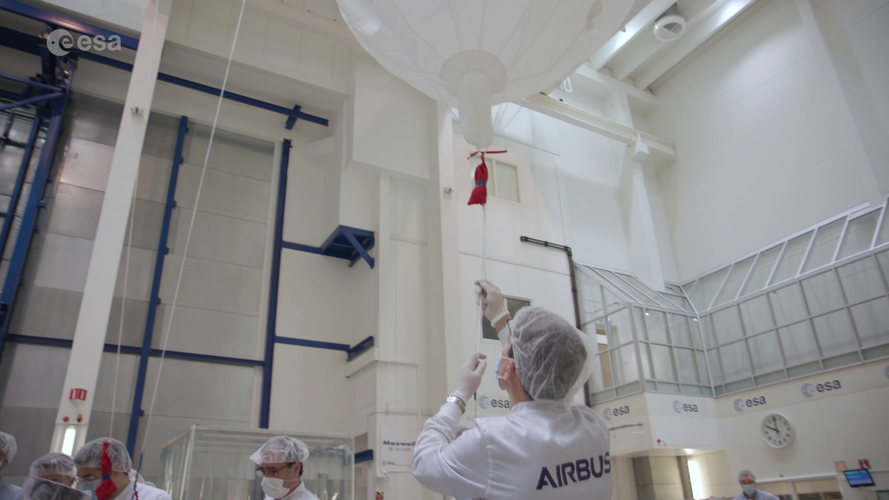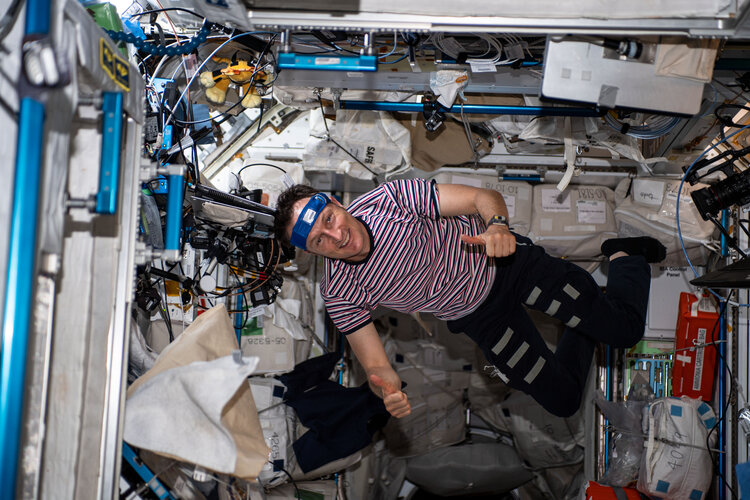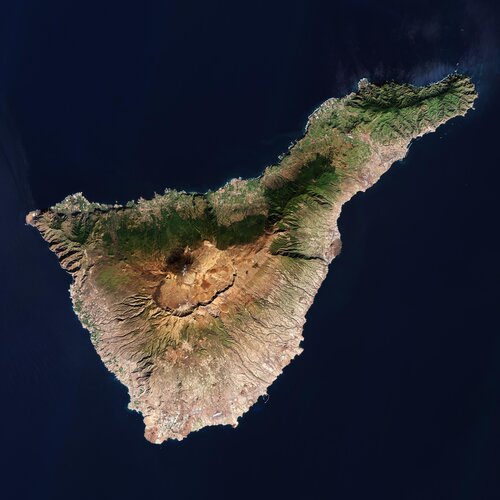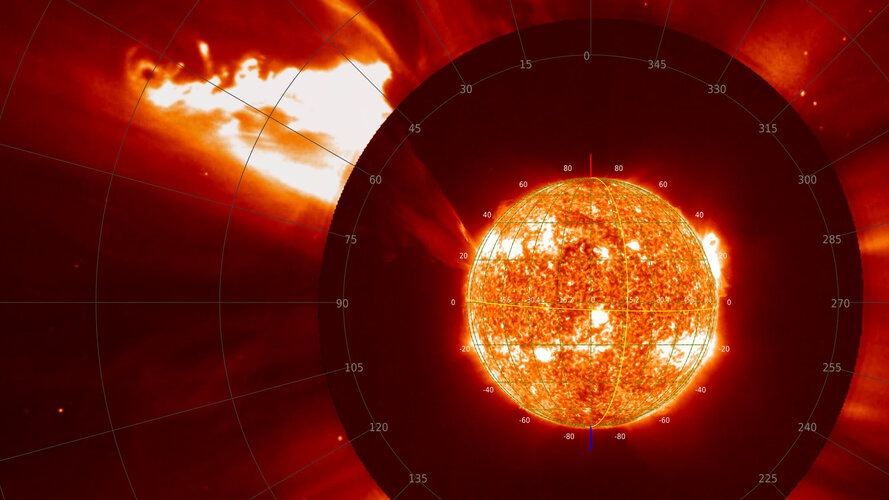
Copernical Team
Getting ready for lunar orbit
 Image:
Image:
ESA astronaut Alexander Gerst visited Thales Alenia Space in Turin recently to test out and provide feedback on accommodations for the next human outpost in space, the lunar Gateway.
As the name implies, the Gateway will be located within the Moon’s orbit and is being built by Thales Alenia Space on behalf of ESA. Among its components is the International Habitation Module or I-Hab.
As crew quarters are designed with humans in mind, Alex both toured the mock-up and stepped into the crew quarter simulator to provide some experienced feedback. After two missions to the International Space Station – Blue
Balloon boom
 Video:
00:01:02
Video:
00:01:02
The 3 m-long magnetometer boom of the Solar wind Magnetosphere Ionosphere Link Explorer (Smile) is deployed under helium-filled balloons to simulate the weightlessness conditions of space.
Smile is a joint mission between ESA and the Chinese Academy of Sciences (CAS) and will aim to build a more complete understanding of the Sun-Earth connection by measuring the solar wind and its dynamic interaction with the magnetosphere.
The structural and thermal model of the Smile payload module is currently undergoing testing at the European Space Research and Technology Centre (ESTEC) in Noordwijk, the Netherlands. Missions frequently come ‘home’ to ESA’s technical
100 days of Cosmic Kiss science

Saturday 19 February marks 100 days since ESA astronaut Matthias Maurer was launched to the International Space Station for his first mission, Cosmic Kiss. He launched on a SpaceX Dragon spacecraft with NASA astronauts Kayla Barron, Raja Chari and Tom Marshburn as a member of Crew-3. But even before he was launched to space, he was subject to scrutiny for science.
Earth from Space: Tenerife, Canary Islands

The Copernicus Sentinel-2 mission takes us over Tenerife – the largest of Spain’s Canary Islands.
100 days of Cosmic Kiss
 Video:
00:04:40
Video:
00:04:40
English - 100 days of Cosmic Kis
On 11 November 2021, ESA astronaut Matthias Maurer was launched to the International Space Station for his first mission, Cosmic Kiss. Around 100 days later, we reflect on some highlights from space.
Matthias flew to the Station on a SpaceX Crew Dragon alongside NASA astronauts and fellow first-time fliers Kayla Barron and Raja Chari, and NASA spaceflight veteran Tom Marshburn. Collectively known as Crew-3, they were welcomed as members of Expedition 66 by Commander Anton Shkaplerov, cosmonaut Pyotr Dubrov and NASA’s Mark Vande Hei.
While in orbit, Matthias is supporting over 35 European
Giant solar eruption seen by Solar Orbiter

The ESA/NASA Solar Orbiter spacecraft has captured the largest solar prominence eruption ever observed in a single image together with the full solar disc.
NASA challenges students to discover what powers them
 NASA is inviting students to participate in an essay contest to explore how it powers some of its most famous missions. The contest also encourages participants to learn something about themselves in the process. The Power to Explore Challenge, open to K-12 students in U.S. public, private, and homeschools, is accepting entries from Tuesday, Feb. 15 through Wednesday, April 13.
The competi
NASA is inviting students to participate in an essay contest to explore how it powers some of its most famous missions. The contest also encourages participants to learn something about themselves in the process. The Power to Explore Challenge, open to K-12 students in U.S. public, private, and homeschools, is accepting entries from Tuesday, Feb. 15 through Wednesday, April 13.
The competi Latecoere strengthens its space activities through three cooperations with Airbus
 Latecoere, a leading partner of major international aircraft manufacturers and the European leader in satellite wiring, is strengthening its activity in the space industry thanks to three major cooperation projects with Airbus.
Latecoere designs, industrializes, produces and integrates electrical harnesses for three emblematic European space programs: the Eurostar Neo satellites, for both
Latecoere, a leading partner of major international aircraft manufacturers and the European leader in satellite wiring, is strengthening its activity in the space industry thanks to three major cooperation projects with Airbus.
Latecoere designs, industrializes, produces and integrates electrical harnesses for three emblematic European space programs: the Eurostar Neo satellites, for both Can a planet have a mind of its own?
 The collective activity of life-all of the microbes, plants, and animals-have changed planet Earth.
Take, for example, plants: plants 'invented' a way of undergoing photosynthesis to enhance their own survival, but in so doing, released oxygen that changed the entire function of our planet. This is just one example of individual lifeforms performing their own tasks, but collectively having
The collective activity of life-all of the microbes, plants, and animals-have changed planet Earth.
Take, for example, plants: plants 'invented' a way of undergoing photosynthesis to enhance their own survival, but in so doing, released oxygen that changed the entire function of our planet. This is just one example of individual lifeforms performing their own tasks, but collectively having Students with Perseverance receive messages from Mars
 The first set of middle-schoolers in the agency's "You've Got Perseverance!" campaign was honored with a message from the Red Planet and a chat with the rover team at JPL.
A group of 20 young students who have shown the character trait that NASA's Perseverance rover is named for received messages of encouragement directly from that six-wheeled scientist on Mars.
Nominated by educator
The first set of middle-schoolers in the agency's "You've Got Perseverance!" campaign was honored with a message from the Red Planet and a chat with the rover team at JPL.
A group of 20 young students who have shown the character trait that NASA's Perseverance rover is named for received messages of encouragement directly from that six-wheeled scientist on Mars.
Nominated by educator 
